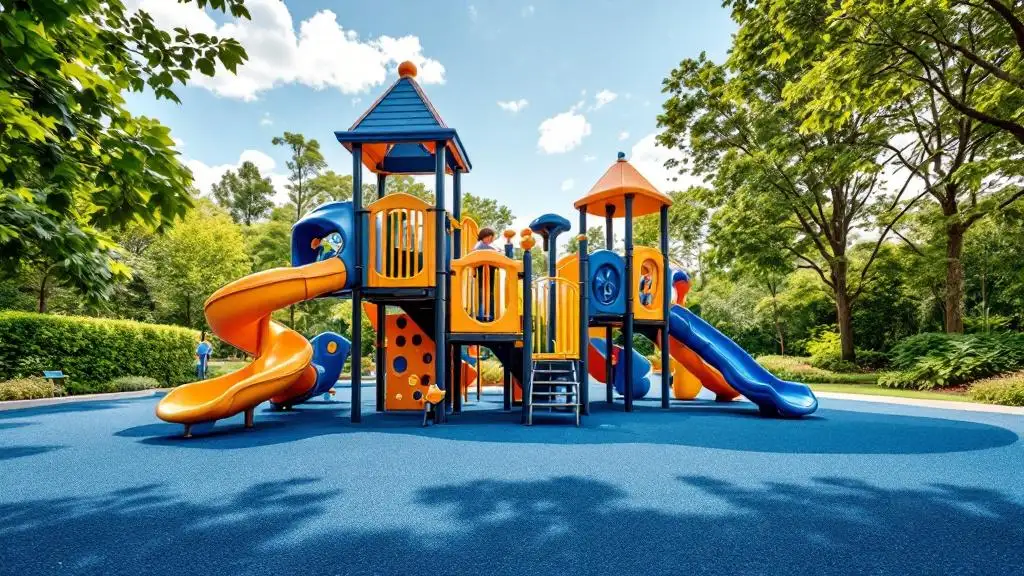
Fostering Support and Inclusion in Schools for Children with Disabilities
Supporting children with disabilities in educational settings requires a collaborative, comprehensive approach that integrates policies, resources, and innovative practices. The Department of Developmental Disabilities (DDD) partners with schools to facilitate inclusive environments where every child can thrive academically and socially. This article explores how DDD works with educational institutions to promote accessibility, implement individualized support systems, and foster community understanding towards children with disabilities.
Legal Frameworks and Policies Supporting Inclusive Education
 The education rights and policies for children with disabilities are grounded in important federal laws that promote inclusion and protect against discrimination. Among the most significant are the Individuals with Disabilities Education Act (IDEA), Section 504 of the Rehabilitation Act, and the Americans with Disabilities Act (ADA).
The education rights and policies for children with disabilities are grounded in important federal laws that promote inclusion and protect against discrimination. Among the most significant are the Individuals with Disabilities Education Act (IDEA), Section 504 of the Rehabilitation Act, and the Americans with Disabilities Act (ADA).
IDEA, enacted in 1975 and amended over the years, ensures that students eligible for special education services receive a free appropriate public education (FAPE) tailored to their individual needs. It requires schools to create individualized plans called IEPs—Individualized Education Programs—for eligible students, outlining specific supports, services, and accommodations.
Section 504, passed in 1973, prohibits discrimination against individuals with disabilities in programs receiving federal funding. It mandates reasonable accommodations and supports that allow students with less severe disabilities to participate fully in educational activities.
The ADA, established in 1990, extends similar protections to all public entities, including schools. It requires accessible facilities, auxiliary aids, and effective communication to ensure students with disabilities can access and benefit from education without discrimination.
These laws are enforced by multiple federal agencies, notably the Department of Education’s Office for Civil Rights. They uphold the rights of students to inclusive classroom environments, accessible facilities, and necessary supports.
Parents and guardians have the right to request evaluations, participate in developing IEPs and Section 504 plans, and advocate for their children's needs. Schools are obligated to provide reasonable accommodations such as assistive technology, adapted materials, and accessible physical environments.
By adhering to these policies, schools can create equitable learning settings that celebrate diversity, foster inclusion, and support every child's opportunity to learn and thrive. The enforcement of these laws continues to be vital for maintaining high standards of access and fairness in education.
Assessment, Evaluation, and Planning for Support
 Determining the educational needs of children with disabilities requires careful assessment and evaluation processes. These procedures begin with obtaining informed consent from parents or guardians, ensuring they understand the scope and purpose of the assessments. A comprehensive evaluation is then conducted by trained professionals using culturally appropriate and scientifically validated assessment tools.
Determining the educational needs of children with disabilities requires careful assessment and evaluation processes. These procedures begin with obtaining informed consent from parents or guardians, ensuring they understand the scope and purpose of the assessments. A comprehensive evaluation is then conducted by trained professionals using culturally appropriate and scientifically validated assessment tools.
The evaluation process examines all relevant areas of functioning. This includes physical health, vision, hearing, social and emotional well-being, intelligence, academic skills, communication abilities, and motor skills. Multiple methods are used, such as observations of the child in different settings, interviews with teachers and family members, and review of existing educational or medical data. This multi-faceted approach helps create an accurate picture of the child's strengths and challenges.
A multidisciplinary team reviews all collected information to determine the child's eligibility for special education services following federal and state guidelines, including requirements under the Individuals with Disabilities Education Act (IDEA). Once eligibility is established, an Individualized Education Plan (IEP) or support plan is developed within mandated timeframes. These plans are tailored to meet the specific needs identified during assessment and are designed to promote the child's developmental and educational success.
Re-evaluation is an essential part of the process and is usually conducted every three years or more frequently if needed. This ensures that services remain suitable and that the child's progress aligns with their emerging needs. Regular assessments involve parents, educators, and specialists working collaboratively to adjust educational strategies, supports, and accommodations, fostering an inclusive and responsive learning environment for each child.
Creating Inclusive Learning Environments Through Supports and Accommodations

How do school-based accommodations and modifications support children with disabilities?
School-based accommodations and modifications play a vital role in ensuring children with disabilities can participate fully and successfully in classroom learning. Accommodations are adjustments made to the way instruction or assessment is delivered without altering the core content. Examples include providing extra time on tests, offering alternative response techniques, or using sensory supports to help students focus.
Modifications, on the other hand, involve altering what is taught or the expected outcomes. This might include simplifying assignments, offering different materials, or adjusting the curriculum to match the student's abilities. Such changes help students with significant disabilities access the curriculum at a level that suits their unique needs.
Both accommodations and modifications are carefully individualized, often outlined through an Individualized Education Program (IEP). They are designed to remove barriers, foster engagement, and promote equity in learning environments.
By implementing these strategies, educators can support diverse learners, build inclusive classrooms, and enable all students to demonstrate their knowledge. These supports are essential for achieving educational equity, developing skills, and ultimately helping children reach their full potential.
Implementing Supportive Classroom Practices

How can schools better support children with developmental disorders?
Supporting children with developmental disorders requires a holistic approach that includes tailored educational strategies, physical accommodations, and fostering an inclusive environment. Visual cues such as boundary markers like rugs, colored tape, and barriers help children understand different spaces and promote independence. Structured daily schedules, adapted to a child's recognition and reading abilities, provide predictability that reduces anxiety and enhances engagement.
Motivational strategies are also essential. Alternating preferred activities with less-preferred ones, offering meaningful choices, and maintaining varied pacing can motivate students and increase participation. Clear instructions using visual cues, along with regular checks for attention, ensure children understand what is expected and can perform tasks successfully.
Creating opportunities for social interaction through structured peer activities and giving children specific roles or training peers as social coaches can foster social skills and inclusion. Additionally, planning for skill generalization across different settings helps children apply learned skills broadly.
Accessibility is fundamental, so schools should have physical modifications like ramps and elevators, and utilize assistive technology whenever necessary. Laws such as the Americans with Disabilities Act (ADA) mandate equal access, supporting an inclusive learning environment.
Equally important is ongoing professional development for teachers in inclusive strategies, assistive technology, and disability awareness. Programs that promote disability awareness help reduce stigma, build understanding, and create a supportive school culture.
Encouraging self-advocacy among students boosts their confidence and independence, while open communication between schools, families, and students ensures that support strategies remain effective and responsive.
In summary, offering individualized supports through comprehensive planning—such as IEPs—and creating an inclusive, accessible classroom environment are vital ways to support children with developmental disorders effectively. These strategies not only help meet regulatory standards but also foster a nurturing atmosphere where all students can thrive.
Promoting Social Inclusion and Peer Support
How do collaboration models between government agencies, schools, and families promote inclusive education?
Effective inclusive education hinges on strong collaboration among government agencies, schools, and families. These models foster coordinated efforts that ensure students with disabilities receive comprehensive support tailored to their needs.
Through shared planning and regular communication, stakeholders develop individualized transition and support services, aligning resources and strategies for better outcomes. For example, interagency partnerships bring together educators, healthcare providers, and social services to create holistic support systems.
This teamwork helps schools implement inclusive practices more effectively, ensuring students participate fully in class activities and social interactions. It promotes a supportive environment where diversity is accepted, and every child has equitable opportunities.
In practical terms, collaboration results in accessible facilities, appropriate accommodations, and social programs that target peer inclusion. By breaking down systemic barriers, these models foster a community of acceptance and shared responsibility.
Overall, collaboration among governments, schools, and families builds a network that champions diversity, encourages shared goals, and optimizes educational experiences for all students, especially those with disabilities.
Building a Culture of Inclusion and Awareness in Schools

How do disability awareness programs foster inclusive environments?
Disability awareness programs play a crucial role in promoting understanding and reducing stigma within schools. These programs educate students, staff, and families about various disabilities, emphasizing that a disability is just one aspect of a person’s identity. By sharing real stories, hosting workshops, and incorporating inclusive curricula, schools can build empathy and support diverse needs.
Why is teacher training and professional development important?
Teachers equipped with specialized training and ongoing professional development are better prepared to support students with disabilities. Training on inclusive teaching practices, assistive technology, and behavior management helps educators implement effective strategies. Regular workshops and collaborative learning opportunities ensure teachers stay updated on best practices, fostering confidence and competence in creating accessible learning environments.
How can schools enhance family engagement and communication?
Strong collaboration with families is vital for supporting children with disabilities. Open, respectful communication in families’ preferred languages and understanding their routines and cultural practices helps tailor supports. Schools can organize meetings, share resources, and involve families in decision-making processes such as developing or reviewing IEPs. Building trust fosters a partnership that benefits the child’s development.
What elements contribute to creating welcoming classrooms?
Creating an inclusive classroom involves visual supports like family photos, multicultural materials, and designated spaces for different activities. Arranging the physical environment with accessible furniture, visual cues, and boundary markers helps all studentsnavigate spaces independently. Promoting positive social interactions, through buddy systems and peer group activities, encourages acceptance and belonging among students of varying abilities.
| Strategy | Purpose | Examples & Details |
|---|---|---|
| Disability awareness programs | Reduce stigma, promote understanding | Workshops, stories, inclusive curricula |
| Teacher training | Equip teachers with inclusive practices | Assistive tech, behavior management, differentiation |
| Family engagement | Ensure collaborative support | Regular communication, translators, family routines |
| Welcoming classroom design | Foster safety and independence | Visual cues, multicultural displays, accessible layout |
| Peer interactions | Develop social skills, acceptance | Buddy systems, peer mentoring, inclusive activities |
By integrating these practices, schools can cultivate an environment where all students feel valued, supported, and empowered to thrive.
Fostering Self-Determination and Empowerment
How can schools better support children with developmental disorders?
Schools play a vital role in promoting independence and self-esteem among children with developmental disorders. One effective approach is to implement individualized education plans (IEPs) that clearly outline necessary accommodations such as extended test durations, one-on-one support, and quiet spaces for work. These tailored strategies help meet each child's unique needs.
Providing accessible physical environments, including ramps, elevators, and assistive technology, is crucial. These modifications ensure all students can participate equally in classroom activities. Equally important is professional development for teachers on inclusive practices, assistive devices, and understanding diverse disabilities. This knowledge enables educators to adapt lessons and support systems effectively.
Creating a culture of acceptance through disability awareness programs reduces stigma and fosters understanding among students and staff. Encouraging students to develop self-advocacy skills enables them to communicate their needs confidently and independently. Open communication channels between schools and families ensure that support strategies are consistent and responsive.
Supporting a child's journey toward independence also involves teaching decision-making, goal setting, and self-awareness skills. These empower children to take control of their learning and social interactions, laying a strong foundation for lifelong success.
Integrating Support for a Brighter Future
Effective collaboration between DDD, schools, families, and community resources forms the cornerstone of inclusive education. By adhering to legal standards, implementing individualized plans, and fostering a culture of acceptance, we can create empowering environments where children with disabilities can reach their full potential. Continued commitment to training, resource allocation, and policy development will ensure that all students are valued and supported in their educational journeys, paving the way for a more equitable and inclusive society.
References
- Teaching Children With Developmental Disabilities: Classroom Ideas
- How Schools Can Support Students with Disabilities | NEILS
- How Students with Developmental Disabilities and ... - AbilityPath
- Education - AAIDD
- School Services for Children with Special Needs: Know Your Rights
- Services for Children Who Do Not Qualify for IDEA: Fact Sheet
- Supports, Modifications, and Accommodations for Students












